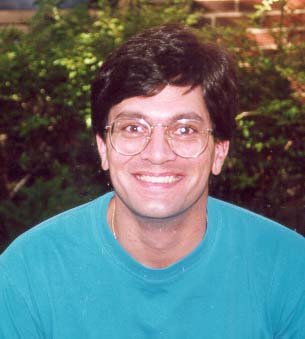

![]()
This study investigates how upper-division college students interact with laboratory instruments to construct understanding from experiments. Very little is known about how scientific instruments are used by students as tools for constructing understanding. We wish to identify the characteristics of instruments that impact student construction of scientific understanding. We will use the distributed cognition model (Salomon, 1997) as a framework for analyzing how people use the tools and artifacts in their environment to support their thinking and learning.
Distributed Cognition Perspective. Distributed cognition does not frame knowledge solely as mental representations or even group activity; rather, knowledge is manifested in activity and interaction within a particular setting. From this perspective, knowledge is an emergent property of an interacting system and is itself distributed across or embedded in the interactive patterns of system elements. Therefore, in distributed cognition, ‘knowing’ is a more appropriate description of what is known, and ‘knowing’ can be applied to individuals and groups and artifacts/tools. Artifacts/tools are seen as cognitive residues of prior actions; thus these objects may play an essential role in the overall cognitive process. These artifacts/tools can be physical tools, notational systems (i. e. algebraic equations), or even involve processes, such as computation. Thus, laboratory instruments carry complex, sophisticated knowledge (embedded in their design and functions) of the phenomena they are designed to explore.
Methodology. Two questions guide this research. (1) What are the affordances of spectrophotometers that impact students’ understanding (macroscopic, microscopic, and symbolic) of chemistry in aqueous solutions? (2) What are the affordances of spectrophotometers that impact students’ interpretation of data pertaining to the chemistry in aqueous solutions? Because the research questions probe students’ understandings of both the instruments and the chemical concepts, qualitative research techniques are the most appropriate means of collecting the rich, in-depth data needed to address these questions. Therefore, most of the data will be verbal and will be collected from five sources: (1) field notes from observations, (2) videotapes of students using the instruments, (3) students’ ‘voice journals’ (see below), (4) interviews, and (5) course documents (syllabus, lecture notes, handouts, laboratory procedures, and student work). These data will be coded into categories, and frequency tables for each category will be constructed. Coding categories and frequency counts for the categories will be checked for reliability and validity. Patterns emerging from each data source will be cross-checked with the other sources (triangulation). These patterns will then be used to create a series of assertions to address the research questions.
Salomon, G. (1997). Distributed cognitions: Psychological and educational considerations. New York: Cambridge University Press.
![]()